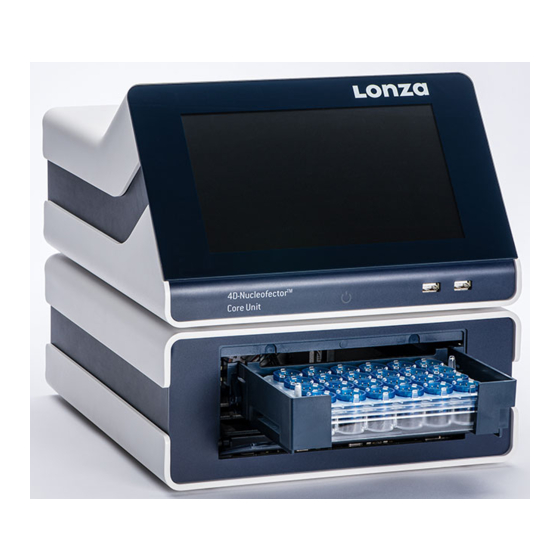
Lonza Cultek 4D-Nucleofector Hardware Manual
Hide thumbs
Also See for Cultek 4D-Nucleofector:
- Manual (44 pages) ,
- Quick manual (4 pages) ,
- Instructions for use (2 pages)








Need help?
Do you have a question about the Cultek 4D-Nucleofector and is the answer not in the manual?
Questions and answers